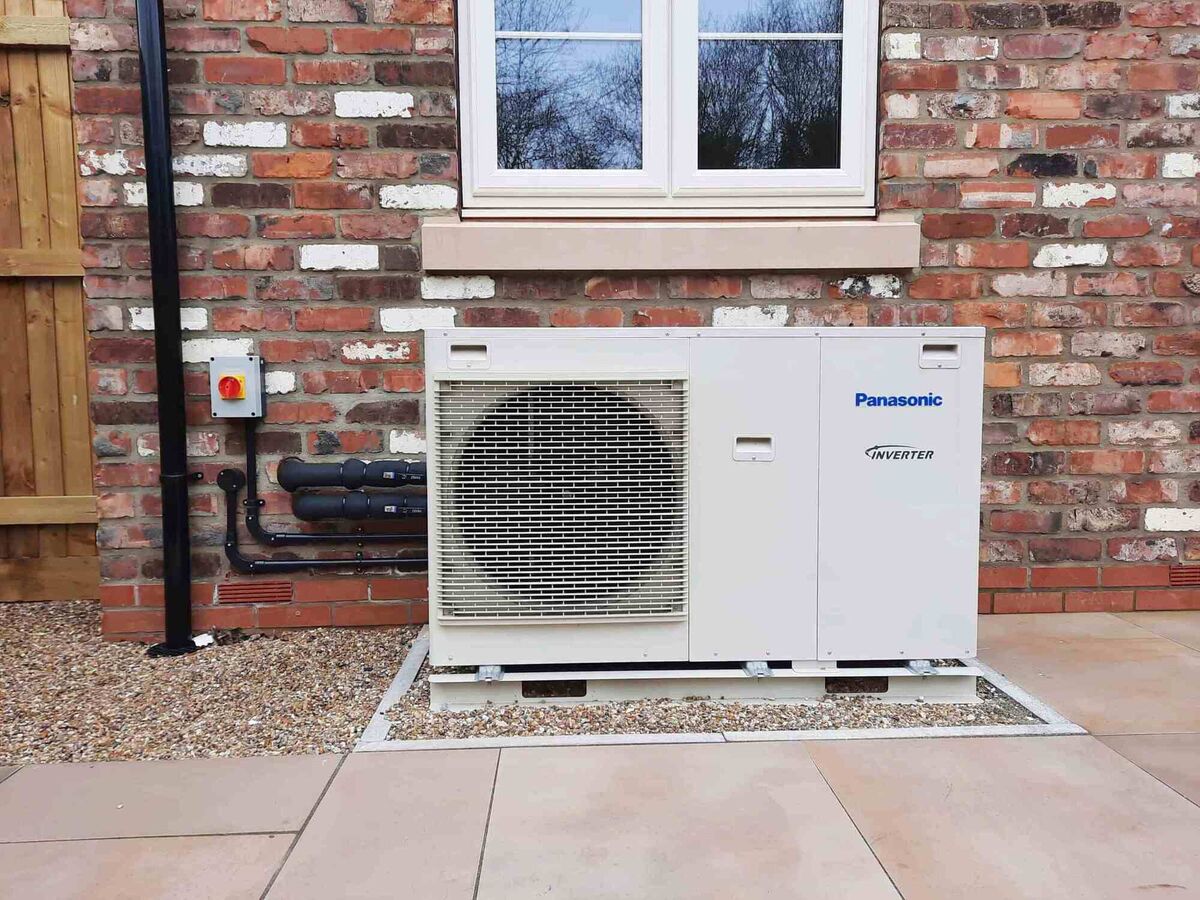What to consider before installing a heat pump in your home

The background heat of a quality, perfectly commissioned heat pump, warming the air over long periods and married to UFH and mechanical ventilation will provide a fresh, comfortable environment year round. Picture: iStock
WE’VE touched on the technical wonder, cost and considerable prerequisites demanded of heat pumps many times in the last four to five years in these pages. Sipping air, gathering heat from the earth, or fed by the latent warmth of a rural stream, they promise low running costs with startling 200%–400% efficiencies, and zero carbon emissions at point of use. Only natural gas can touch the economy and environmental performance of heat pumps as home heating.
We are still way behind the curve, compared to say Germany, Sweden, Estonia, Finland and Norway.
Speaking to renowned Irish architect Neil Burke Kennedy recently, he shrugged and told me: “We were putting geothermal heat pumps into all future-forward builds commercial and residential from the early 1990s.”
Green construction media publications including Passive House + under editor, Jeff Colley, (where the house couldn’t be detailed to actually make more power than needed), the only way was heat pump. Geothermal heat pumps offer the greatest return on the squeak of kWs needed for the pump to cycle, returning it as multiples of heat units.

Your HP is an electrical device; it has to have power to run the pump and compressor. That dependence on power pricing and the potential shiver in our national infrastructure to serve HP systems and the growth of EV is somewhat unsettling.
Moving into a new-build home, or carrying out a meaningful energy upgrade, compelled by Part L of the building regulations, and gentled by SEAI grant assistance — the magic box is finally here. It’s a mind-bending change for enthusiasts and luddites alike, even with high up-front costs and the reality of rising electricity prices. To find out more about whether your home is ready search online for ‘How do I get my home heat pump ready?’ to read our previous feature.
Now, of course, every house is different, but we will presume you have a BER of at least B2 (the limit demanded by technical advisors working with the SEAI). Any heating system is only as good as the insulation in the building and the habits of the residents. Be engaged.
If your home is leaching heat through the roof, walls, windows and doors, a heat pump will helicopter your electricity bill up to nerve-mincing altitudes. Horror stories relayed by early-adopters talked into the technology before making the house HP ready, abound in online discussion boards across Ireland and the UK.
Two local plumbers in my area, who wished to remain nameless, recounted that they had ripped out several heat pumps over the last three years and replaced fossil fuel boilers for exasperated rural customers. A venture into a one-stop-shop; a green-loan mechanism to bring the house up to spec would be a far better investment today than hurling the HP into the shed. For example, dive under the skin of the problem with a free Green Hub survey with An Post: anpost.com/Green-Hub/Book-a-survey.
Otherwise, start by understanding the bald basics of the CH system that has probably been an eye-watering spend in a retrofit. With low running temperatures, heat pump CH is not reactive like a fossil fuel boiler. It will be on for longer periods (sometimes 24/7) and in a highly insulated house, will run at low water temperatures through the floor and/or via appropriate low-flow radiators.
Within reason, (not expecting Hades from a cold start in ten minutes) you’ll just be alert to any obvious temperature problems or error reports on the digital read-out on the controller.
Appropriately sized HP central heating systems are laughingly low maintenance, effortless with quality engineering and perfect installation married to good heating controls. Generally, the advice is to leave the master controller settings alone.
Do not let any installer exit the premises before you put your eye over the manual, and the controller itself. Instruction and demonstration is crucial. Pepper the pro’ with questions, don’t be shy. The controller for hot water and space heating have to be set up to ensure the water is sanitised above 60C periodically, and that the house and water are up to temp’ according to your highly individual comings and goings.
The programmable controller attached to the HP will be responsive to seasonal conditions. This will influence what is termed flow temperatures, and your installer can set these to optimise the HP performance and, crucially, its economy year-round. This may be something you call him/her back to do for you. When something is even slightly off with a heat pump, you’ll feel a chill, often in your perked-up power bill.
If you constantly over-ride the programming and/or temperature of the controller in the belief you can make the heat rage to life in half an hour; expect to see the damage in your electricity bill.
When the system is being commissioned, it’s standard for the engineer to set up the controller and schedule everything to suit the heat load and timetable of your house. An annual service will incorporate this finessing too. Be at home if you’re deemed the brains of the CH issues in the family, poking at the controller and trimming things off with the thermostats.
There will be a manual with your heat pump as part of a full document pack (including servicing and warranty information). These are generally made out as Quick-Start guides suited to a technophobe. Keep in mind that messing around with the compressor, and treating the HP like a boiler can lessen the life of the HPs components.
There’s a coefficient of performance (Cop) with every HP and if you’re interested enough you can monitor through your energy bills if the system is delivering. If your HP CoP is 3, then every kW of electricity it uses, should in theory deliver 3kWh of heat indoors (only on a perfect day with UFH and superb insulation). A better figure to use is the Seasonal Performance Factor (SPF) which takes into account the vagaries of the weather.
You will need to be aware of what power you use aside from the demands of the HP, including any backup space and water heating (the Irish domestic average is 4,200kWh). Take monthly readings from your smart or analogue meter after the HP installation to track the extra hit. Ignore the standing charge and PSO on the bi-monthly bill, as that’s inescapable.
Night rate electricity packages are now morphing into very useful time-of-use tariffs from multiple energy suppliers. Electric Ireland for example, offer Heat-Pump-Price-Plans to let you boost your water heating overnight. For anyone with a heat pump, the price of every kWh (weighted down with the VAT) is going to count — switch supplier or bundles annually.
Photovoltaic solar panels can contribute to the cost of running your HP. Still, with the main heating demand in the darkest, shortest days of winter, manage your expectations of how meaningful this contribution will actually be October to March (even drawing down on a battery). Ask about diversion technology to bring both systems together when there’s a surplus of power from the array.
Running costs for a heat pump will depend on a myriad of factors, including the insulation and air-tightness of the home, the use of UFH, heat recovery ventilation, the efficiency of the HP, personal habits and of course the square metres you live in.
There’s an immersion-style backup water device, that with too much twiddling can discreetly inflate your kWh demand.
€600–€1,000 per year for the kWh (inc.VAT) to a heat pump, ex. servicing, would not be unusual for a standard 3-bed home. A reasonable take of 4,000kWhs to run a pump, would be close to the national average for a bill sans HP. Passive level builds and green warriors can halve those figures with determination. Combining the heat pump with other heat sources has to be factored in too.
The SEAI argue that the right integrated controls to this or any system can cut energy usage by 20%, and many families turn off their system for periods of the day. Don’t faint at the potential doubling of your first post-installation winter leccy’ bill, and average it out over the whole year, not one cold winter month.
CONNECT WITH US TODAY
Be the first to know the latest news and updates









